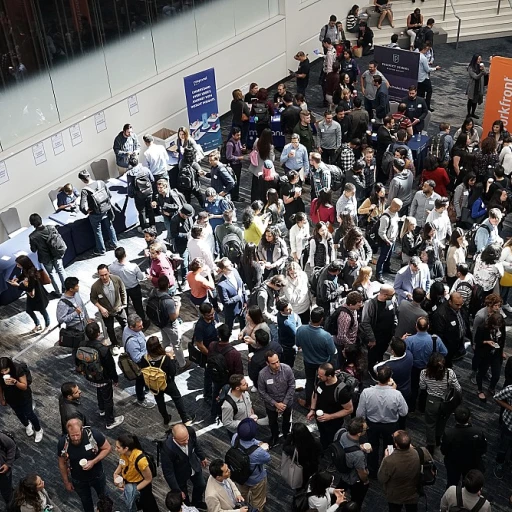The Evolution of 401(k) Plans
Tracing the Historical Path of 401(k) Plans
The journey of 401(k) plans from their inception to the present day has been one of significant evolution. Initially introduced as a supplementary option to pension plans, the 401(k) has grown into a primary retirement savings vehicle for millions of Americans.
In the late 20th century, companies started to recognize the 401(k) plan as a valuable addition to their employee benefits and compensation packages. Over the years, companies like Millennium Trust Company LLC and John Hancock Financial began offering services to enhance the reach and efficiency of these plans. As the landscape of retirement planning shifted, these companies adapted by offering innovative solutions, facilitating account management and providing guidance through their robust platforms.
Employers have continually played a pivotal role in adapting these plans to align with evolving employee needs and expectations. A profound shift occurred as more employees expressed interest in ways to maximize their savings through their 401(k) plans. Companies responded by sponsoring plans that often include higher match contributions and diversified investment options to cater to the millennium workforce.
The development didn’t stop there. The advent of digital platforms allowed participants easier login and account access, personalized investment advice, and greater transparency in plan details. Improvements in technology and services, spearheaded by key players such as Fidelity and other financial institutions, have made the management of retirement accounts more user-friendly. Whether you need to contact Millennium Trust, find a lost username or password, or enter your credentials, these digital advancements serve to enhance the overall user experience.
Key Features of a Modern 401(k)
The Fundamental Components of Today's 401(k) Plans
A modern 401(k) plan is not just a simple savings account; it's a comprehensive retirement savings vehicle with an array of features designed to assist employees in building a financially secure future. Let's take a closer look at what these plans typically include, providing the foundation for a successful retirement.- Automated Enrollment and Contributions: To streamline the process and boost participation rates, employers often offer automatic enrollment options. This means employees are automatically signed up for the company's 401(k) plan unless they choose to opt out, thereby eliminating initial entry barriers.
- Diverse Investment Options: The ability to select from a broad range of investment choices is a hallmark of a good 401(k) plan. These can include stock mutual funds, bond funds, target-date funds (which automatically shift asset allocation as you approach retirement), as well as other index funds. It's crucial to have investments that cater to different risk appetites and retirement goals.
- Matching Contributions: Employers can provide matching contributions as an added incentive, effectively boosting employees' savings over time. For instance, an employer might match 50% of employee contributions up to a specified limit, thereby encouraging discipline and higher contribution levels.
- Convenient Access and Management: With the advent of digital tools, managing your retirement savings has never been easier. Most plans offer online platforms or mobile applications, allowing employees to securely monitor their accounts, adjust investments, and explore educational resources. Being able to seamlessly access one’s account, retrieve forgotten login details like username or password, and find comprehensive plan details is a crucial aspect of modern services.
- Rollover Options: Transitioning from one employer to another is not uncommon, and 401(k) plans offer flexibility with rollovers to Individual Retirement Accounts (IRAs) or other plans. This feature ensures that employees can maintain their retirement savings growth without unnecessary setbacks.
Maximizing Your 401(k) Contributions
Strategic Contributions for a Secure Retirement
Maximizing your 401(k) contributions is key to securing a robust retirement savings plan. Whether you're an employee approaching retirement or a millennium just starting your career journey, understanding contribution strategies can greatly impact your financial future. Here are some valuable insights:
- Know Your Limits: The IRS sets annual contribution limits for 401(k) plans. For 2023, the limit is $20,500, with an additional $6,500 in catch-up contributions allowed for those aged 50 or older. Being aware of these limits helps you make the most of your retirement plan.
- Utilize Employer Matching: Many companies, like those under the corporation umbrella, offer matching contributions. This "free money" is essential to optimize your retirement account. For instance, if your company offers a 3% match, ensure you're contributing at least that much.
- Consider Rollover Options: If you have funds in an IRA or from a previous employer, rolling over to your current 401(k) might be beneficial. Engaging services from firms such as Millennium Trust Company or Oak Brook LLC Plan can assist in making informed decisions.
- Regularly Review Plan Details: Access your plan online, using your login credentials (remember to contact Millennium if you forgot your password or username). Platforms such as Fidelity or John Hancock provide detailed account summaries and investment options to help tailor your strategy.
- Keep Up with Changes: Retirement plans evolve, and staying informed will help you adapt. Explore our resource on unlocking the full potential of level benefits for more on how benefits programs are adapting to modern needs.
With a strategic approach, maximizing your 401(k) can lead to substantial long-term benefits. Integrating professional solutions and staying informed are pivotal steps in ensuring a secure financial future.
Common Challenges and Solutions
Overcoming Challenges and Finding Solutions
Managing a 401(k) plan can bring about several obstacles for plan participants and their employers. Recognizing these challenges and implementing effective solutions is crucial to ensure a smooth retirement journey. Here, we detail common challenges associated with the modern 401(k) and provide guidance on addressing them.
Understanding Plan Details and Login Issues
One of the most frequent issues employees encounter involves accessing their retirement plans. Complex login processes often lead to frustration, with participants needing assistance to find their username or reset forgotten passwords. To counter this problem, companies can implement user-friendly login platforms. Providing clear instructions and contact details for assistance—like reaching out to the plan’s provider, whether it be John Hancock, Fidelity, or Millennium Trust Company—creates an easier path toward accessing account information.
Navigating Investment Options
Investment choices within a 401(k) plan can seem overwhelming. Many participants struggle to decide how to allocate their contributions among the available options. Detailed guidance from financial services, such as Millennium Trust and IRA rollover options, aid participants in aligning their investment strategies with long-term retirement goals. Furthermore, offering educational resources or one-on-one consultations with financial advisors can help employees make informed decisions on their 401(k) investments.
Addressing Contribution and Rollover Concerns
Maximizing contributions is key to building a substantial retirement savings pot. Employees may face difficulty in understanding the impact of making maximum contributions versus partial ones. To resolve this, companies should provide tools, such as retirement calculators, and provide transparency regarding the potential growth of their savings over time. Additionally, clear guidelines on the rollover process, especially when employees transition to new companies, will help maintain the continuity of their retirement savings.
Engaging Diverse Workforces
Modern workforces, which include multiple generations from millennials to the baby boomers, require tailored communication strategies that address each group's unique needs and challenges. Employers need to deliver trust-building educational sessions catering to diverse employee demographics, ensuring all participants understand how to navigate their retirement plans effectively.
By embracing these solutions, employers and participants can work towards a streamlined approach to resolving challenges in their 401(k) plans, fostering an environment of financial security for a successful retirement.








